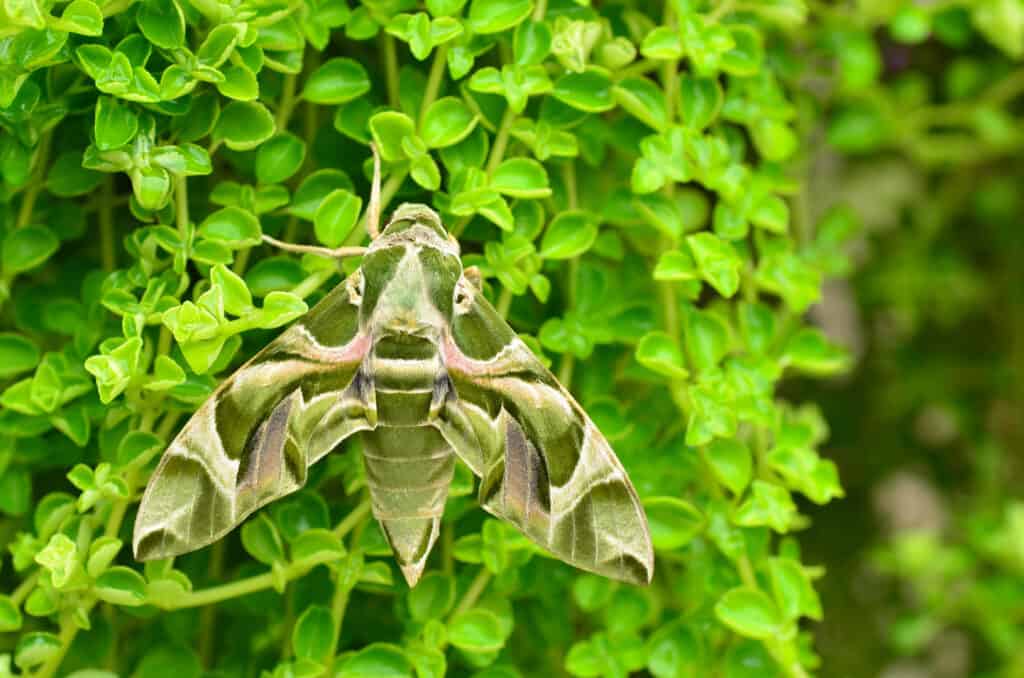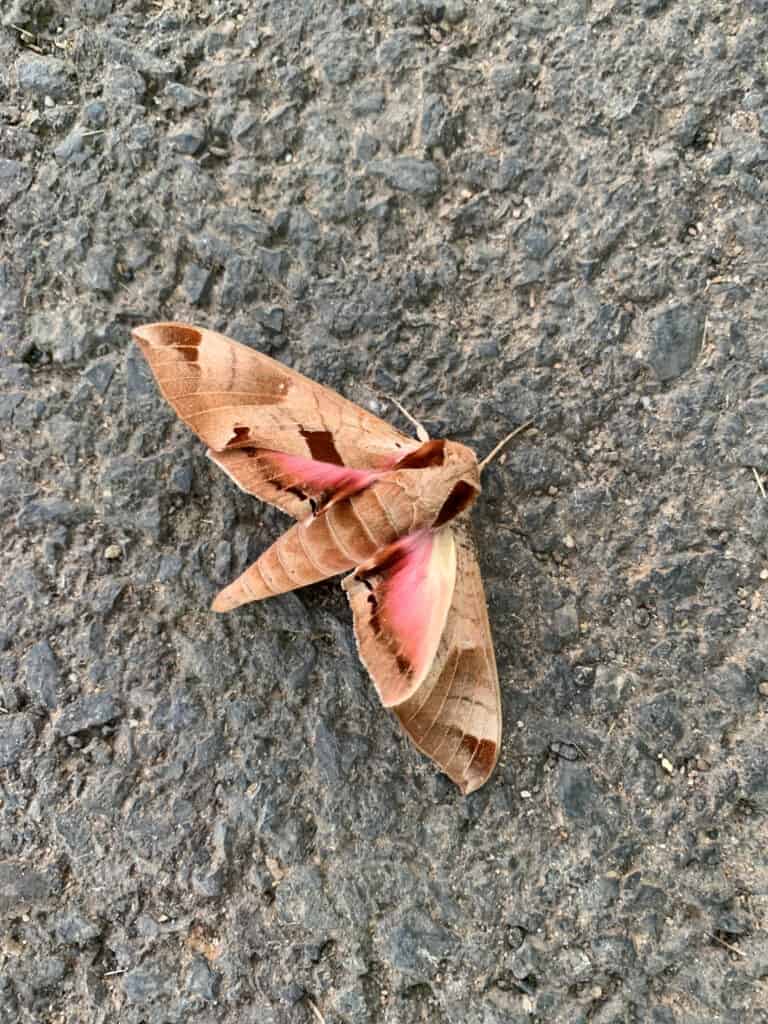Besides being one of the largest caterpillars, hawk moth caterpillars are among the prettiest and come in shades of green or greenish-blue. Unfortunately, a caterpillar that’s supposed to grow to as much as 4 inches before it pupates needs a great deal of provender. There are legions of gardeners who go out to pick their tomatoes in the morning to find the plants stripped bare by the tomato hornworm, one of the most notorious of the hawk moth caterpillars. On the other hand, the nimble hawk moth is a major pollinator of plants both needful and beautiful.

Some hawk moth caterpillars nip at would-be threats while others like the Abbott’s and Walnut Sphinx caterpillars hiss, squeak, and whistle.
In warmer climates, some hawk moths have two or more generations of caterpillars a year.
Some hawk moth caterpillars overwinter in the earth as pupae.
The African death’s-head hawk moth was the rather creepy moth seen in the movie Silence of the Lambs, among other movies. Its scientific name Acherontia atropos comes from Acheron, a Greek river thought to be the way to the underworld, and Atropos, one of the three fates who clipped the thread of a person’s life.
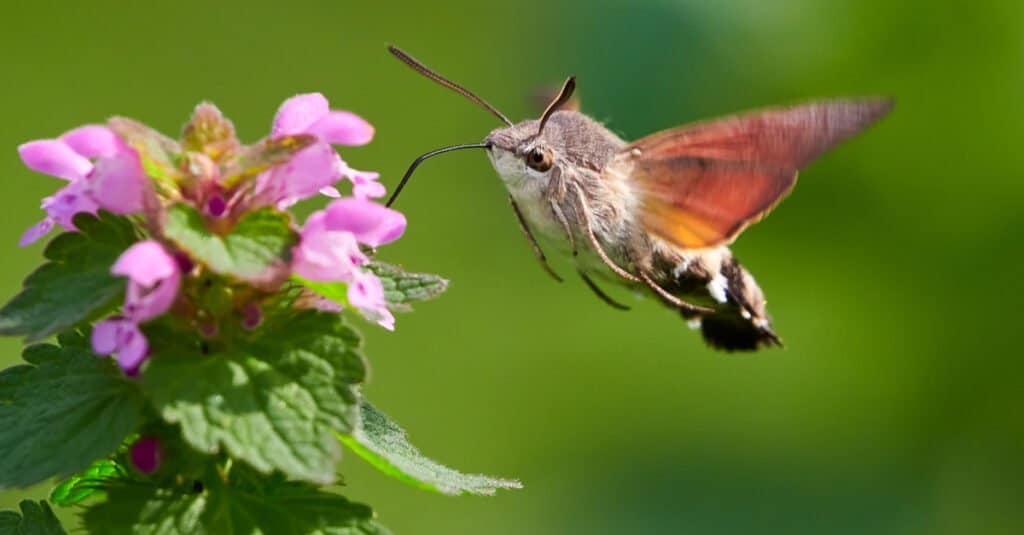
Butterflies and moths are thought to have coevolved with flowering plants and echolocating bats. The most recent common ancestor of all extant Lepidoptera dates to the late Carboniferous period, approximately 300 million years ago. The nectar-feeding proboscis appeared around 240 million years ago in the Middle Triassic period – along with the diversification period of flowering plants.
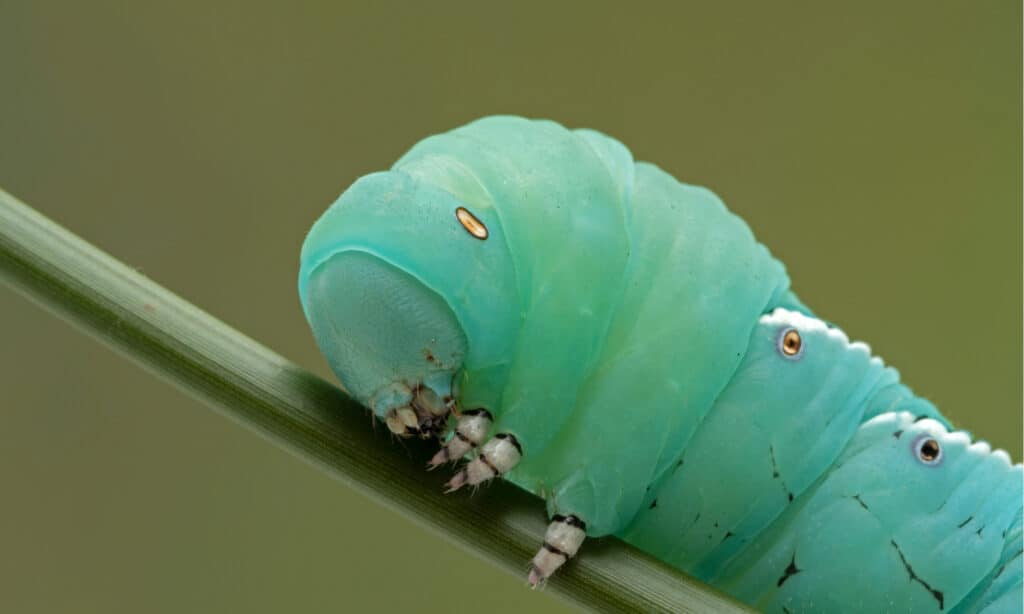
Hawk moth caterpillars are large, with cylindrical bodies. They usually have a horn at the back, though this horn is not at all hard but fleshy. Other caterpillars may have a hardened button or an eyespot in the same area. For example, Abbott’s sphinx has what looks like a reptile’s eye where the horn is on other sphinx caterpillars. The caterpillar’s back legs, which are formally called anal prolegs, are flattened so they can hold on tightly to the plant as the caterpillar feeds. Hawk moth caterpillars are often wonderful shades of green with diagonal white stripes, red spots, and white granules that look like tiny pearls. Some hawk moth caterpillars turn brown as they mature.
Eating as voraciously as they do helps the caterpillar grow rapidly. By the time it is mature, a tomato hornworm has grown 10,000 times the size it was when it hatched out of its egg 21 days before. Hawk moth caterpillars generally molt their skin four times before they reach their full size. The form of the caterpillar after it hatches or molts is called an instar, and lepidopterists can tell which instar a caterpillar has arrived at by measuring its size and sometimes its appearance.
After they have eaten and grown to the right size, some hawk moth caterpillars drop to the ground and burrow in where they pupate. Others spin a cocoon attached to the trunk or main stem of their food plant. Some hawk moth caterpillars spend the winter as pupas and don’t emerge until the next spring.
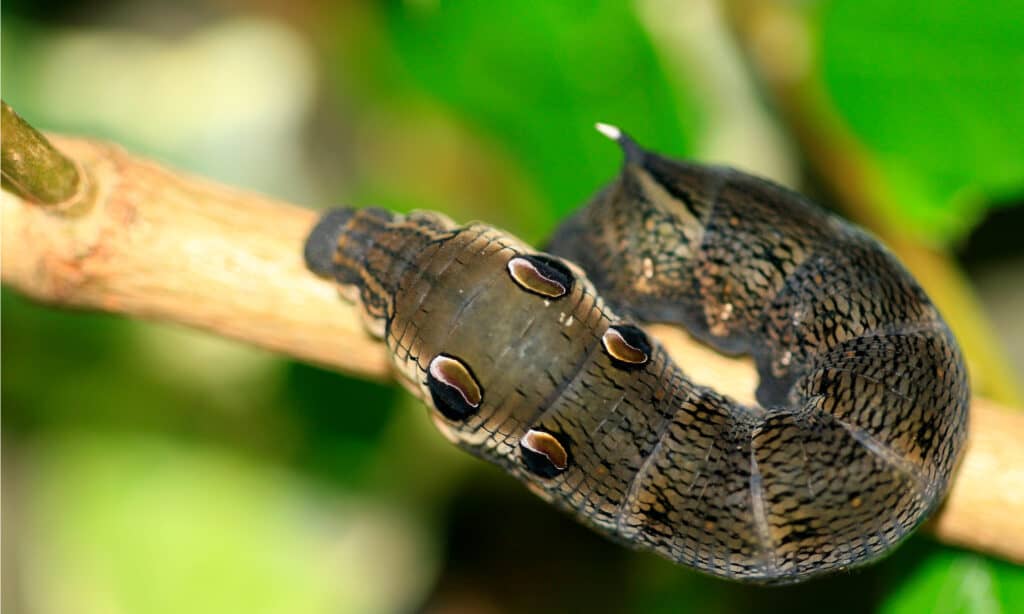
Hawk moth caterpillars live in a variety of habitats, but they predominate in warmer climates. There are tropical flowers that are dependent on the hawk moth adults to pollinate them. This can be seen in the relationship between the Madagascar Star Orchid and the hawk moth Xanthopan morgani, whose tongue is just long enough to reach into the long nectar spurs of the flower.
Besides tropical forests, hawk moth caterpillars can be found in gardens, fields, meadows, waste places, urban parks, woodlands, and the edges of woodlands, pine barrens, and wet meadows. They can be found in fencerows, along watercourses, and in hammocks and orchards. They are, in a word, found anywhere there is a good supply of plant food.
